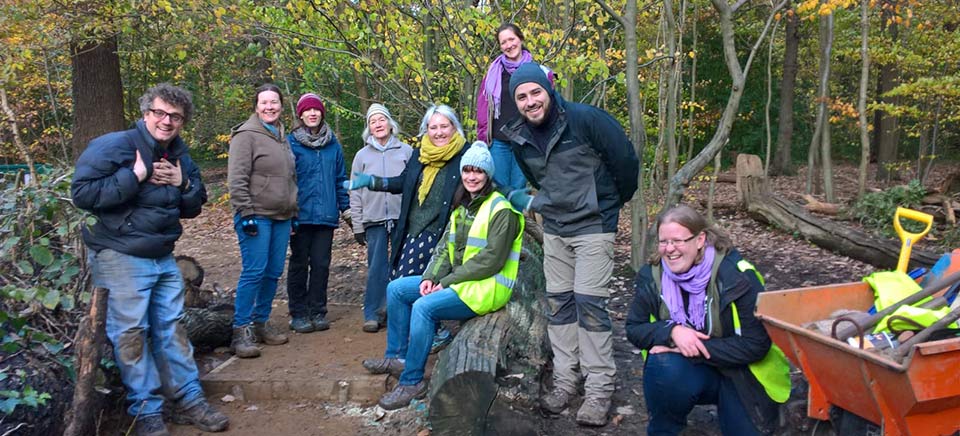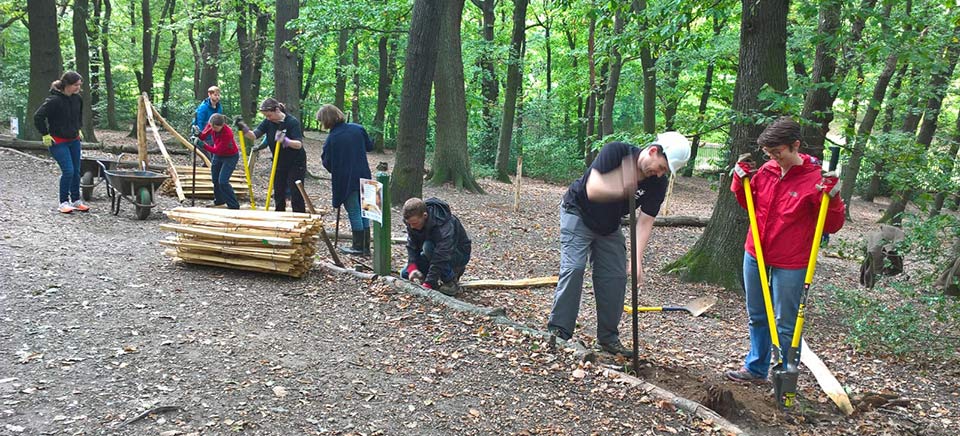Giving nature a helping hand
Centuries ago, Dulwich was covered by The Great North Wood ancient forest, that over time was chopped down as London grew. Today The Dulwich Estate owns and manages parts of Dulwich Woods by working with the London Wildlife Trust. This partnership, through the Great North Wood project, has in the past year helped to deliver 33 conservation days and two guided walks. It helps to protect a vital area of the wood, while increasing public access. Work carried out includes path construction, coppicing, pond maintenance and fence repairs.
Great North Wood project officers Sam Bentley-Toon and Edwin Malins explain more.
“Volunteering is a way to meet like-minded people. Everyone seems to really enjoy it.”

"Some of the woods our volunteers are working in haven’t had any management for years. We do a safety talk at the start of every session and work one to one with someone if they’re nervous about using sharp tools for the first time. We usually work from 11am until 3.30pm, but we’re flexible.
"Most of our woodland management work happens in the autumn and winter, outside of the nesting season. In the summer we repair paths, build new steps, possibly put a pond in at one of our sites. We also survey butterflies and wildflowers.
"We see results quickly. Recently we’ve been clearing cherry laurel, a species introduced by the Victorians that blocks out the light. After a few hours, lines of sight open up and sunlight falls on the woodland floor. That means young saplings and woodland flowers can grow again.
"Working in urban woodland has its own challenges – litter, fly tipping and the number of visitors. When people stray off the path, vegetation is killed and you’re left with compacted ground where trees and wild flowers won’t grow. Fencing off areas gives them a chance to regenerate. That’s good news for small animals like hedgehogs."

"Our project aims to restore five flagship species: oak and hornbeam – which were the main species of the original woodland – woodpeckers, purple hairstreak butterflies and stag beetles. We organise tree walks, bat walks, bird walks, butterfly walks and fungi walks, do family sessions in the school holidays and school sessions near all of the 13 sites. It’s all about getting people to experience actual woodland for themselves.
"Anyone can help with the Great North Wood project. There are tasks suitable for people with all different levels of physical fitness, and occasional helpers are welcomed as warmly as regular volunteers."
To find out more, email greatnorthwood@wildlondon.org.uk or visit www.wildlondon.org.uk/great-north-wood.


